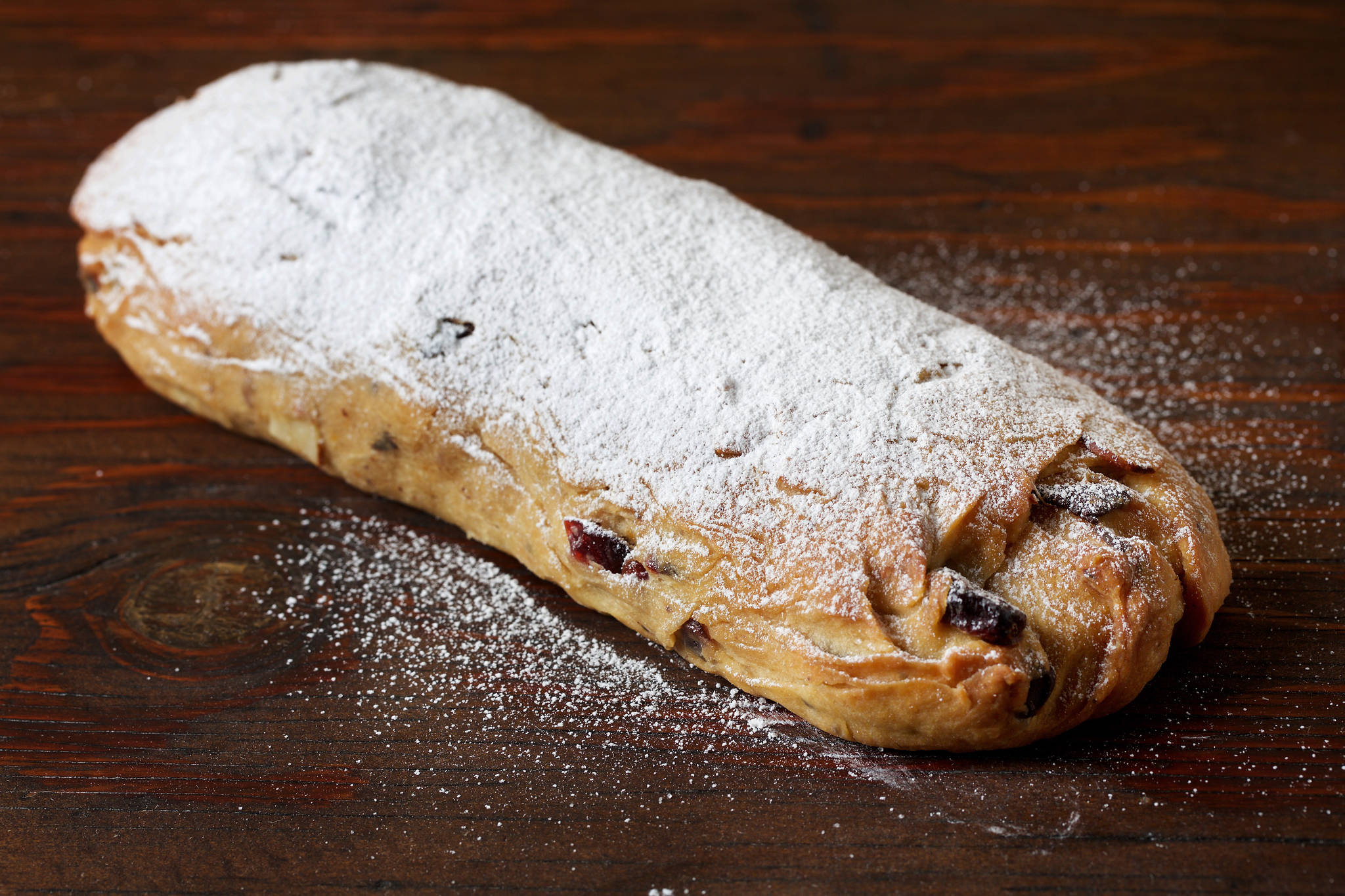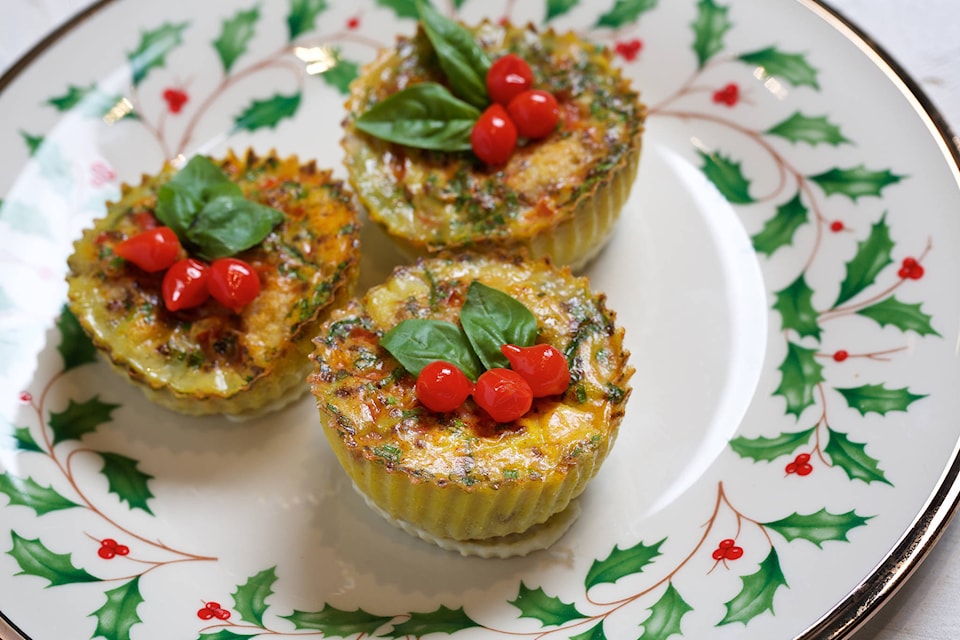If I had to pick a favorite holiday movie, it would probably be the 1945 classic, “Christmas in Connecticut,” in which Barbara Stanwyck plays a Martha Stewart-like character who cannot actually cook. She’s terrified when she is asked to make pancakes - and flip them artfully in the air - for Christmas breakfast, all in front of her rapt houseguests.
I might be terrified, too, if only because I would have to mess up my kitchen on Christmas morning. Luckily for me, the lessons I learned growing up have evolved over the years into three easy recipes for Christmas morning that are delicious and hassle-free. I credit my mom for the inspiration.
Busy with a full-time career and a growing family, my mom figured out how to catch a little extra shut-eye on Christmas morning while still providing a special breakfast treat that did not involve cracking open a box of Pop-Tarts. Her solution: a buttery Christmas stollen that actually tasted better when it had been made a couple of days in advance.
In the pre-dawn hours of Christmas morning when I was a child, I would wake to find a stocking full of goodies at the foot of my bed. I figured out later that this move from Santa kept me so busy pulling small toys and treats out of the stocking that my parents were able to sleep until a reasonable hour - and there was always the stollen to keep hunger at bay.
Do you know stollen? The traditional Christmas bread dates to 15th-century Germany and bears some similarity to fruitcake. Its dried fruit is sometimes soaked in liquor, and a cylinder of marzipan is often baked into its center. The recipe my mother used came from “The Gourmet Cookbook, Vol. 2,” published in 1957; over the years, she made adjustments, adding golden raisins, which she soaked in rum, plus candied pineapple and cherries. She never made it with a marzipan filling (which turned out to be a good thing later when my brother got married, because his wife doesn’t care for almond paste).
Tiptoeing out of my bedroom just after sunrise, I would find the stollen waiting on the kitchen counter, snowcapped with a light coating of powdered sugar. My Christmas morning taste memories often revolve around toasting thick slabs of it, liberally slathering them in salted butter and dusting them with cinnamon sugar. Late in the morning, after a couple cups of coffee, my mom might fry up bacon and corn cakes - my dad’s favorite breakfast. But the stollen was always the star.
It was so popular in our family that my half brother, while stationed in the Army in Germany as a young man, reportedly didn’t win any local friends when he derided their stollen as not being as good as my mom’s. Still, my own version is not exactly the same as the one from my childhood; I’m not a big fan of candied fruit, so I substitute dried cranberries, for a little tartness, and Amarena cherries, for a little sweetness, and I add dark chocolate (because … dark chocolate). But the basic recipe is the same, an uncomplicated blend of flour, yeast, butter and milk, which I make in a dairy-free version for vegan friends.
Fast-forward 20 years to me sitting in the kitchen at the home of a neighborhood mom while our 2-year-olds are having a play date. Such occasions typically involved tea - okay, maybe a glass of wine - and a package of Pepperidge Farm cookies. But not this mom. She pulled a batch of gooey homemade cinnamon rolls out of the oven. When I exclaimed, between mouthfuls, that she had gone to too much trouble, she replied airily, “Not at all. I make big batches all at once and just freeze them, then pull them out when I’m ready to bake.”
I don’t mind saying that it was a moment that rocked my world, and I knew that a new baking tradition was about to grace my holiday breakfast table.
Because, as much as I adore my mother’s stollen, I have a bit of a thing for sweet rolls. (Don’t we all?) Not those gargantuan swirls crowned with a thick layer of cream cheese icing whose aroma wafts through a shopping mall, but pillowy puffs of yeasty dough, barely sweetened and lightly glazed. For me, they are reminiscent of the sweet rolls that my husband and I used to pick up at Grandy’s Farm Market in North Carolina, just before we drove across the causeway for our yearly pilgrimage to the Outer Banks, a welcome memory of sunshine during the short winter days.
My version, layered with orange marmalade in homage to the citrus groves near my parents’ home in Central Florida, are quite easy to assemble in advance, although I confess that I am usually too eager to eat them to freeze them for later. I do, however, take them through the first rise early on Christmas Eve, then roll and cut them, setting them for the second rise overnight in the refrigerator, or, if the weather is cold enough, in my laundry room, which tends to be chilly in the winter. In the morning, I transfer the rolls to the kitchen counter to warm up to room temperature while we open presents, then pop them into the oven for 20 minutes to bake into golden perfection.
Finally, I have begun adding make-ahead eggs to my repertoire, for those in the family who, inexplicably, eschew carbs. Baked in muffin pans, mini-frittatas can be stuffed with chives, spinach, red peppers, or sun-dried tomatoes for a Christmas-y appearance, then frozen for several weeks until you’re ready to pop them in the microwave.
Just add a fresh sweet roll on the side, then get back to snuggling up next to the tree. Because no one should be standing over the stove, or cleaning up a kitchen mess, on Christmas morning.
Mini Christmas Frittatas
6 servings (makes 12 mini-frittatas)
Whisk together a few eggs, milk and some fillings, pour it all into a muffin pan and you’ve got breakfast. Not only that, you can make these tasty little frittatas weeks in advance and pop them in the freezer. Just warm them up in the microwave for a couple of minutes.
Baking with a small ball of mozzarella or other type of cheese inside makes for a nice, gooey surprise when you cut into them.
MAKE AHEAD:
The baked, cooled frittatas can be individually wrapped and frozen for up to 2 months.
From Washington food writer Kristen Hartke.
Ingredients
8 large eggs
1/4 cup whole or low-fat milk
4 teaspoons seeded, minced red bell pepper
2 teaspoons finely chopped chives
1/2 teaspoon celery seed
1/2 teaspoon sweet paprika
1/2 teaspoon salt
1/2 teaspoon freshly ground black pepper
Twelve 1-inch mozzarella balls (plain or marinated)
Small sweet or hot peppers, for garnish (optional)
Small basil leaves, for garnish (optional)
Steps
Preheat the oven to 350 degrees. Line a standard-size, 12-well muffin pan with baking paper or silicone liners.
Whisk together the eggs and milk until well blended, then mix in the bell pepper, chives and spices. Place a mozzarella ball in the bottom of each muffin cup, then evenly distribute the egg mixture among them, so that each cup is about three-quarters full.
Bake (middle rack) for about 30 minutes, until the frittatas are puffed and set; they will deflate a bit as they cool.
Serve right away, garnished with the peppers and basil, if desired. Or allow them to cool to room temperature before storing. If freezing, place the frittatas (unmold them first from the silicone liners, but paper liners can stay on) on a baking sheet and set them in the freezer until frozen, then you can place them in a plastic zip-top bag or other freezer-safe container.
Nutrition | Per serving (using low-fat milk): 160 calories, 13 g protein, 1 g carbohydrates, 11 g fat, 4 g saturated fat, 260 mg cholesterol, 330 mg sodium, 0 g dietary fiber, 1 g sugar
-

